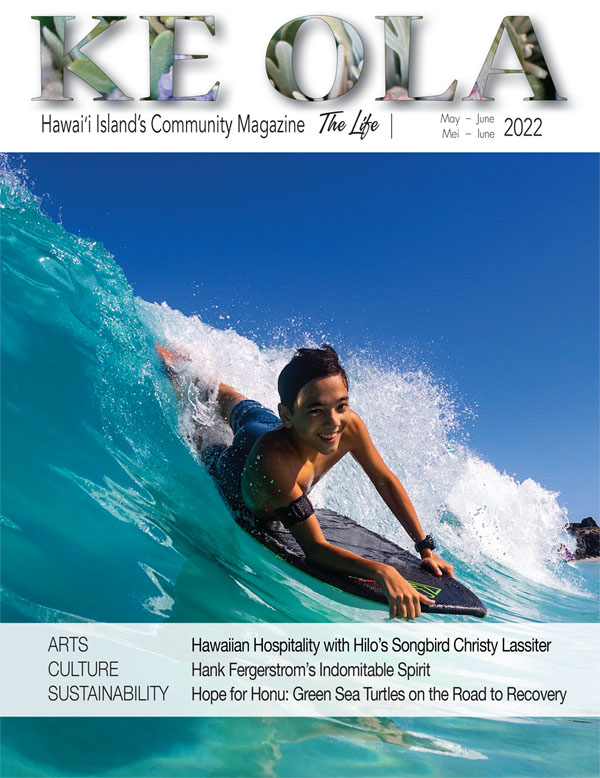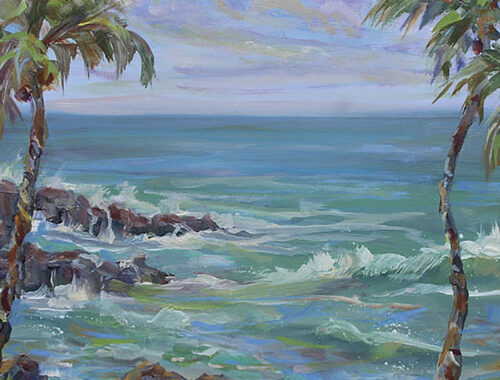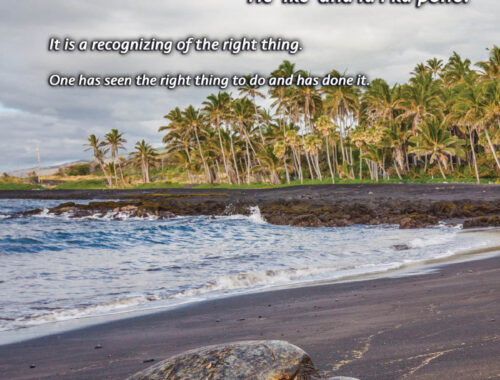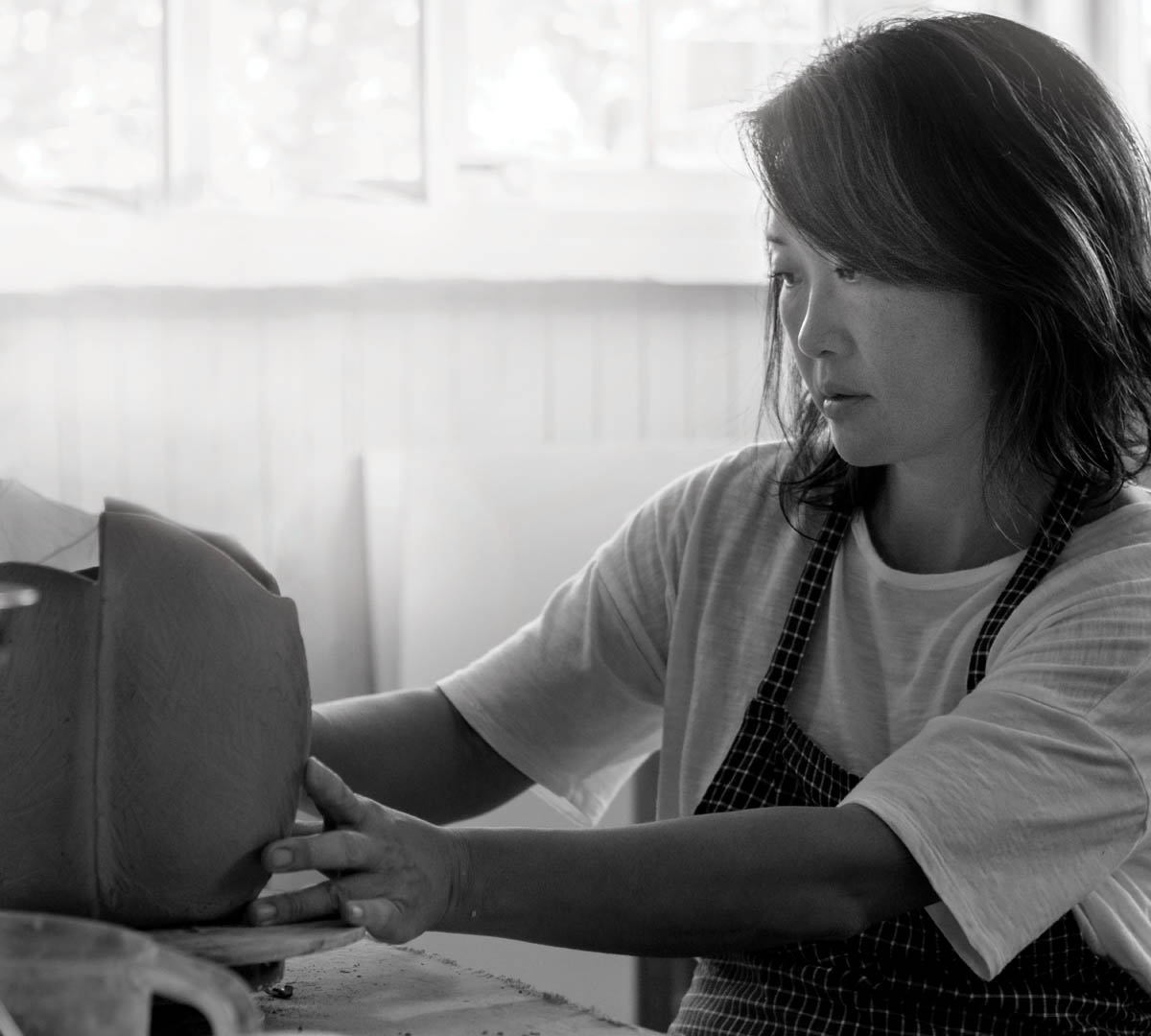
Suzanne Wang: Ceramicist Comes Full Circle

By Ma‘ata Tukuafu
The idyllic rural-village feel of Wailea/Hakalau is what Suzanne Wang wanted when she moved to Hawai‘i Island 11 years ago. She set up her ceramic studio on the lush Hāmākua coast in 2016, both living and working in a place where cars rarely pass by. From Northern California, Suzanne has traveled and worked in many big cities, and says this island is now her home. Her studio is filled with ceramic projects in different stages of creation.
“If it wasn’t for this island, I probably wouldn’t be doing pottery,” Suzanne says. “The simpler lifestyle, the space, and my beautiful surroundings has allowed me to thrive as an artist.”
Suzanne and her brother grew up in the San Francisco Bay area, and were mostly raised by their single mom, Mei, who ran a little Chinese restaurant. She worked as a waitress in the restaurant from a young age, learning skills that would serve her well in her later endeavors. Her mother worked six days a week, 12 hours a day.
“My mom worked hard her whole life, and I didn’t truly understand her dedication and discipline until I became a ceramicist,” Suzanne says.
At 15 years old, she took her first art class in high school, and Suzanne got hooked on clay. She spent a few years taking community college courses in hand building and sculpture. After enrolling in San Francisco State University in 1991, she changed her major to theater set design, as she wanted to do more collaborative work. Suzanne had a one-year break from college to work in stop-motion animation, and she also fabricated puppets for a children’s television show. She then continued her studies in design, earning her master’s degree at New York University. Suzanne spent 10 years immersed in theater, film, and television.
“Then 9/11 happened while I was in New York. Work dried up for a while,” Suzanne says. “I then got the opportunity to work in China doing product development for giftware in the American and European markets.”
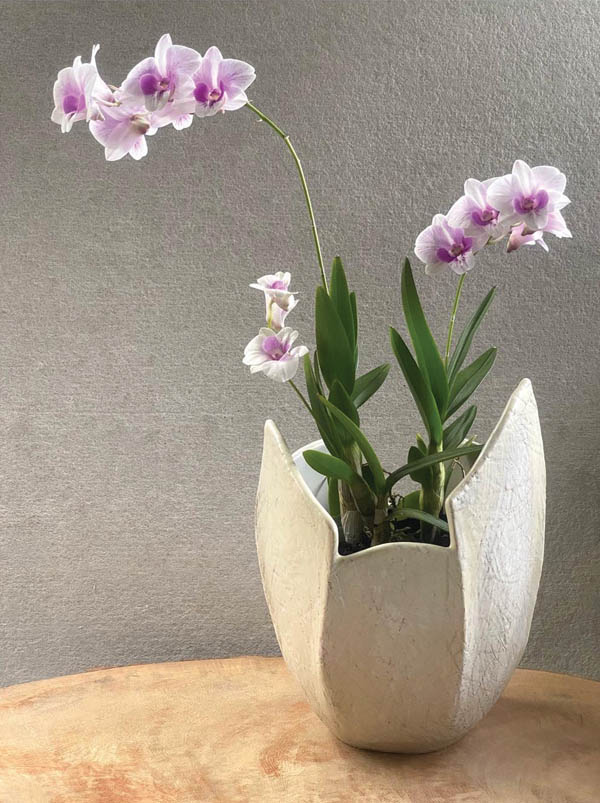
What she thought would only last a few months turned into two years in mainland China, and a year and a half in Hong Kong. It was an incredible time of change in China, and the reconnection with her culture was deeply meaningful. Suzanne lived above a tea shop and got her tea education there, a period of respite during her stressful working life.
“Eventually I got burned out with big-city living,” Suzanne says. “A friend in rural Connecticut who had a tea company, offered me a job as an office manager, and I took it.” Suddenly, she was living in a cabin in the woods, adjusting quickly to the rustic life.
This is when Suzanne realized she was completing a full circle: her great-grandfather was a tea merchant, and here she was, working with tea and sourcing teaware. It reconnected her with pottery. There were a couple of pottery studios in town, and she took a class from one of them, getting her “feet wet again with the clay.” She hadn’t touched clay in 16 years, and Suzanne says it felt like a long-lost love was rekindled. Her job shifted because of a merger, and that’s when she decided to move to Hawai‘i.
Miyo Harumi, the previous owner of Hilo’s long-time establishment, Miyo’s Restaurant, was an old friend who’d had a big impact on Suzanne’s life. They partnered up to open a teahouse in Hilo but plans didn’t work out, and the old Miyo’s had to move. They rebuilt the restaurant from the ground up, Suzanne doing the interior design work, while also starting her freelance work. During this time, she attended a student pottery sale at Hilo Community College, and noticed many lovely pieces with interesting glazes. Over the next two years, she took ceramic courses with Monika Mann. She began selling her work at student art sales, getting motivated and really loving the craft.
In 2014, Suzanne took a workshop at the Donkey Mill Art Center in Kailua-Kona, with master potter Ken Matsuzaki, who was visiting from Mashiko, Japan. His lineage came from Shoji Hamada, who was his teacher’s teacher. Mashiko pottery is deeply steeped in the beauty of folk craft.
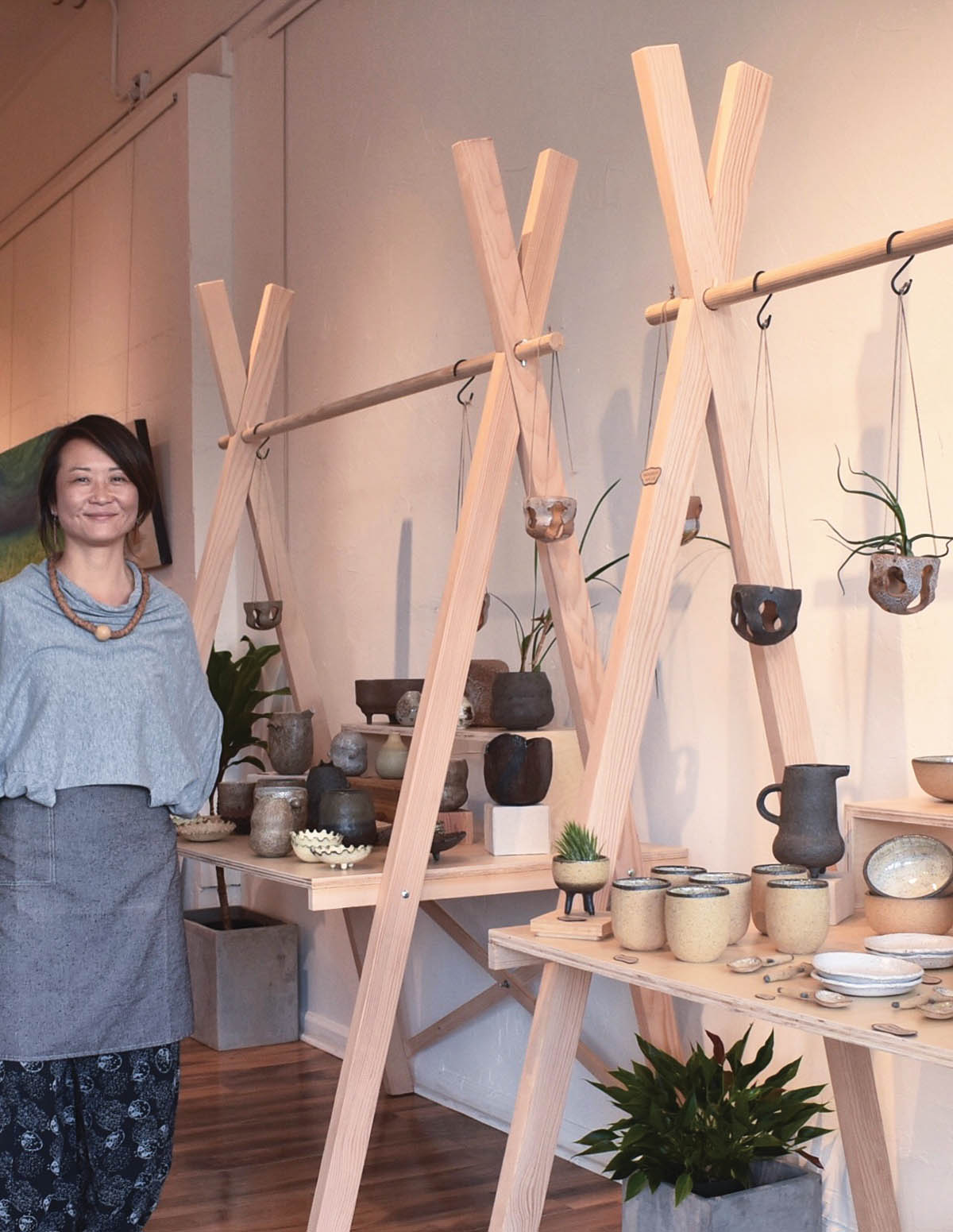
“His way of working blew me away. I’d never really understood Japanese pottery techniques and it was hugely inspiring,” Suzanne says. “A year later when Matsuzaki returned to do a residency, I assisted him for a week and that’s when I realized I wanted to learn more about ceramics and pursue it as a vocation.”
Suzanne was eventually accepted by Matsuzaki as his student and she was able to apprentice with him for one year. Part of her time in Japan was featured in a Hawaiian Airlines documentary.
Suzanne lived a spartan life as an apprentice, riding her bicycle to and from work twice a day from her apartment two miles away. With another apprentice who had been there for seven years, Suzanne was immersed in the potter’s world, where the connection to nature was very strong.
“We worked long days from morning ‘til night, with breaks in between. The majority of time with pottery involves cleaning, organizing, and prep,” Suzanne explains. “The actual throwing, trimming, decoration, and glazing is a small portion of time. That’s why discipline and structure is so important. My teacher emphasized that this training was necessary to help me build stamina.”
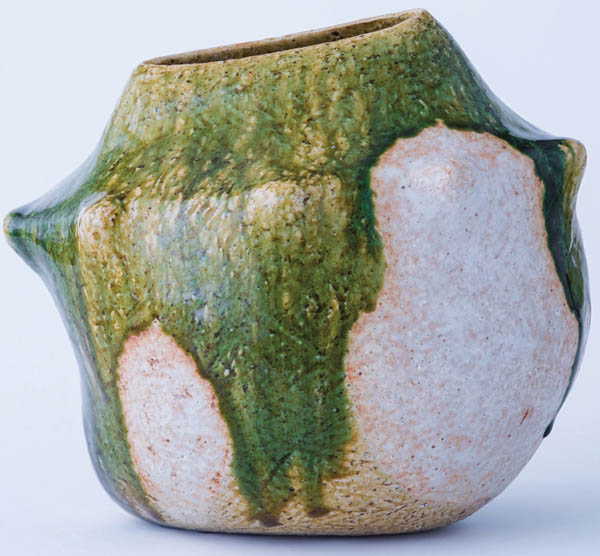
Living the potter’s life gave Suzanne a deeper foundation and understanding of the craft. She says there were so many aspects of the craft to learn, from splitting wood and yard work, to studio photography of the work. In the creation of pottery, repetition can become meditative, the object becoming a part of the person creating it. Suzanne also learned about the indigenous-cultural way of watching and observing with much less talking, adding that the Western style of learning involves so much explaining.
Although communication could be challenging due to the language barrier, she began to realize the importance of a true teacher/student relationship. Suzanne explains that her teacher shouldered an obligation to share, mentor, and to teach skills to his students.
“To be in his world and share his sacred space and home…not a lot of people have access to this,” Suzanne says. “Being an apprentice in Japan felt more like being a disciple, with devotion and complete trust in the teacher.”
Living in Hakalau, Suzanne can walk to the ocean or the rivers, and pick things up from nature that she uses in her work. With a simple pinecone, she can create texture by rolling it onto a bowl, or use a kukui nut to press into the side of a clay sculpture. Feeling connected to nature around her, Suzanne says working with clay grounds her and she is more interested in creating objects that have feeling.
“Energy is transferred to an object, and it leaves you with an experience rather than just something to look at,” Suzanne muses.
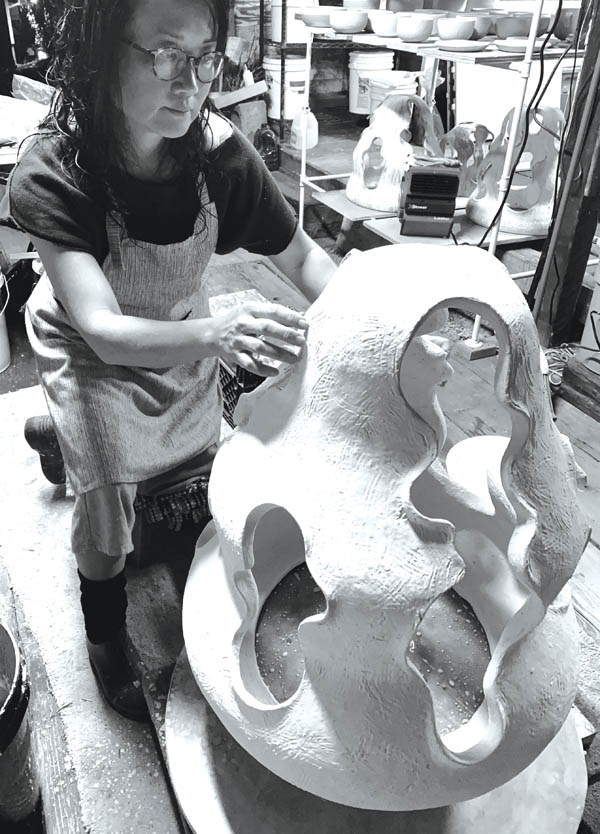
In 2019 Suzanne attended a three-week live-in training at Chozen-ji, a Zen Buddhist temple on O‘ahu that specializes in martial and fine arts. The temple grounds also have a pottery studio and a wood firing kiln. It was at Chozen-ji that she learned about Zen pottery and harnessing one’s kiai, (same as Chinese chi). The training helped her develop core strength through zazen (meditation) and breathing exercises so she could put more life force into her work. Her residential training at Chozen-ji solidly informed Suzanne about her apprenticeship in Japan, and both were bookends of important lessons on discipline.
“Failure is the best teacher,” laughs Suzanne. “And slow learning equals deep teaching.”
Suzanne’s years of working in design and product development has helped her communicate clearly with the interior designers she collaborates with now. She is currently focusing on accessories and decor commissions for Hawai‘i resorts and private residences. Her functional pieces (tableware, drinkware, and home decor items) are sold at local galleries and shops.
Suzanne also teaches ceramics to kūpuna one day a week at the Hawai‘i Island Adult Care center. Most of the participants have dementia or other forms of cognitive impairment. Suzanne loves getting to know her students, and says working in clay is very therapeutic for them.
“There is no attachment, so our little projects can have a lot more freedom and play when it comes to experimentation. It’s a tactile, forgiving, and playful medium for them,” Suzanne says. “Even though they may immediately forget what they’ve made, there is such joy in seeing something they can be proud of.”
Her students have unique personalities that emerge through their work. They’ve been a huge inspiration for her, and Suzanne says they have helped her become a better ceramicist.
“I’m coming into ceramics kind of late in life, but I can do this until the day I die. As long as I can use my hands, I can do ceramics. It is a lifestyle and a vocation and it feels limitless to what I can create. The most important thing is to never stop learning, and to continue to pursue your passions.” ❖
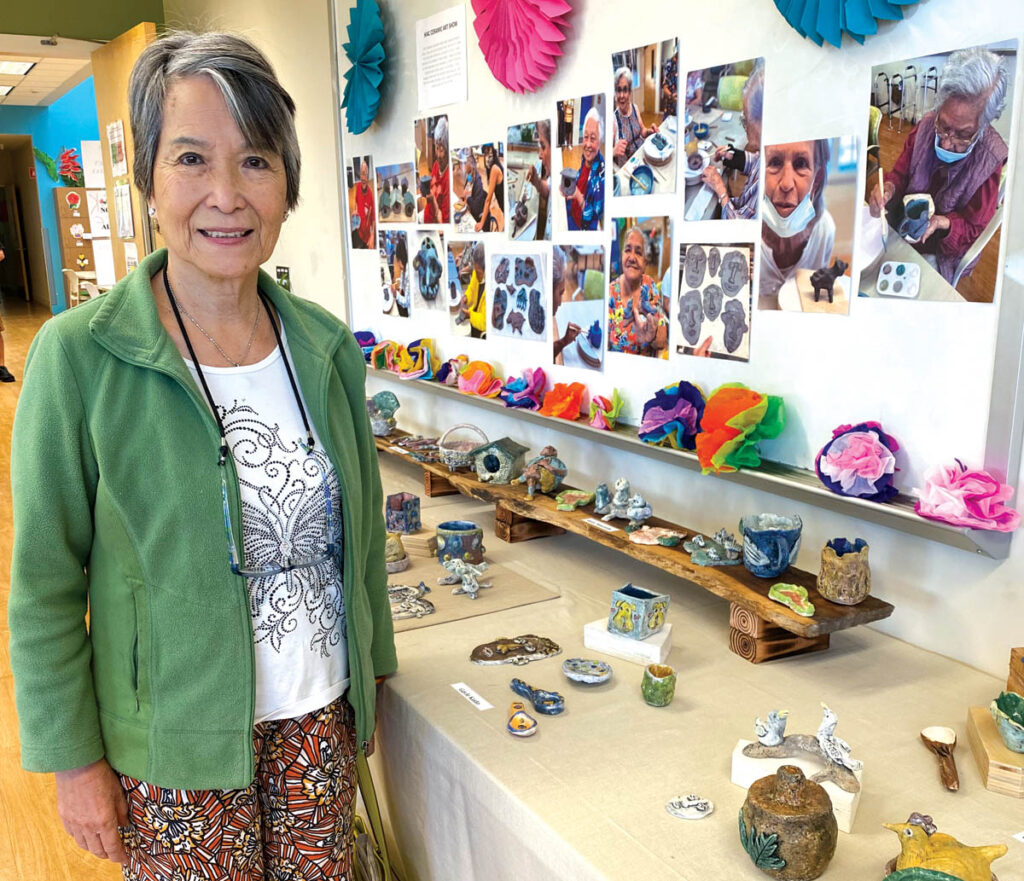
For more information: suzannewangceramics.com
